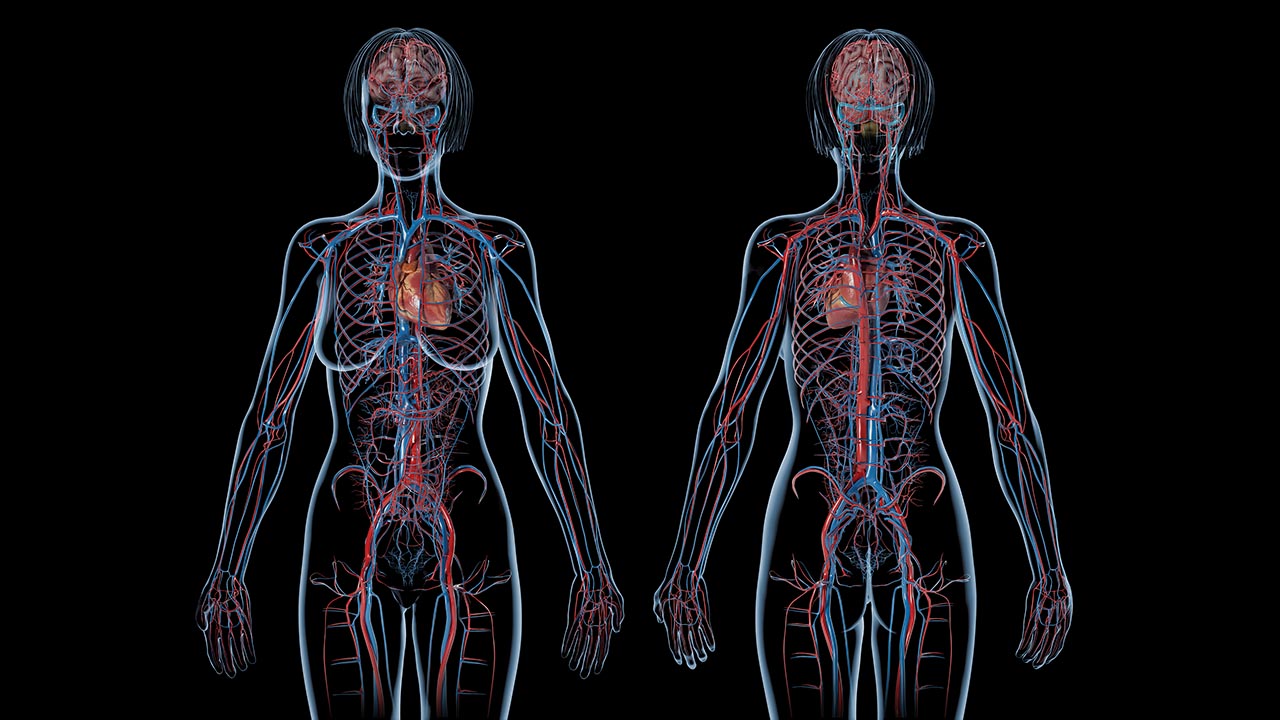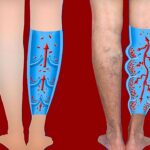The vascular system, also known as the circulatory system, is a network of blood vessels connected with the heart and other organs, and tissues to carry blood and lymph through the body. The blood is carried throughout the body by arteries and veins, delivering oxygen and nutrients to the tissues of the body and taking away tissue waste matter. Lymphatic fluid (a clear, colorless fluid containing water and blood cells) is carried by the lymph vessels to the body.
There are 2 vascular systems
- The arterial system – arteries and arterioles
- The venous system – veins and venules
Arterial system
The Arteries supply oxygenated blood to the body – except for the pulmonary arteries from the heart; these carry deoxygenated blood to the lungs. The umbilical artery carries deoxygenated blood from the fetus to the placenta. The Blood travels from the arteries to the arterioles and onto the capillaries, where gaseous exchange takes place. Aorta is the largest artery that extends from the left ventricle down to the left side of the body. It is divided into four major regions, the ascending aorta, aortic arch, thoracic aorta, and abdominal aorta.
Arteries are divided into elastic arteries, muscular arteries, and arterioles. The elastic arteries are the largest measuring (1-2.5cm in diameter) and comprise large amounts of elastin as well as smooth muscle. They have a large lumen (interior of the vessel) with a low resistance to blood flow which can even expand and recoil to lodge the changes in blood volume. Muscular arteries regulate local blood flow and deliver blood to individual organs. They measure (0.3mm-1cm in diameter) and possess smoother muscle but less elastin than elastic arteries.
What are arterioles?
The arterioles are the smallest arteries (0.01-0.3mm in diameter). In certain areas, they have all three vascular layers (tunica intima, media, and external). When the arterioles are close to the capillaries, they comprise a single smooth muscle layer overlying the endothelial cells. The Blood flow in the capillaries is determined by the diameter of the arterioles which can be increased through vasodilation.
Venous system
The veins are lean, however, elastic vessels act as a reservoir of blood. They do not need large amounts of elastin and smooth muscle, since they transport low-pressure blood back to the heart. They have a large volume and valves that ensure a one-way flow of blood to the heart.
Venules measure (8-100µ in diameter). The largest one possesses a thin tunica externa and a tunica media comprising two or three layers of smooth muscle cells. The venules unite to form veins, in which the tunica externa, consisting of thick collagenous bundles, make the largest layer. The largest vein – the superior and inferior venae cavae – has a large tunica externa thickened by smooth muscle bands. The venous system is an irregular network that tends to follow the course of the arteries.




